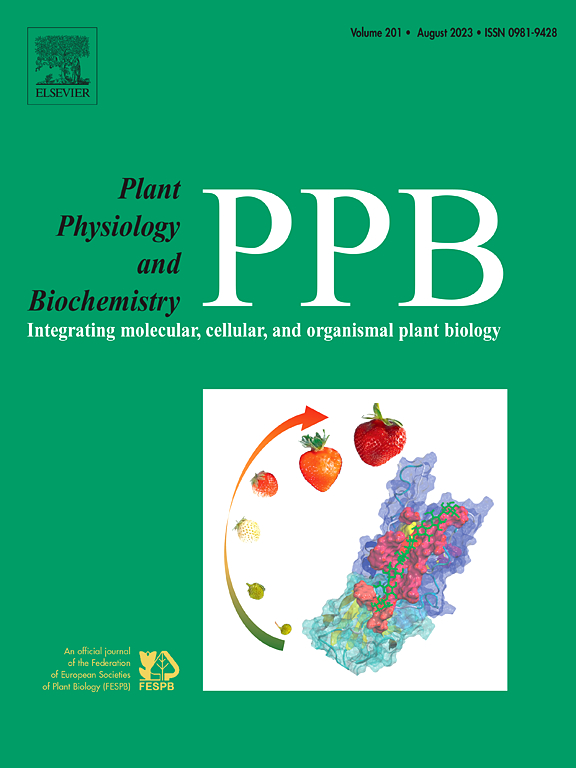New insights into the responses of phosphite, as a plant biostimulator, on PSII photochemistry, gas exchange, redox state and antioxidant system in maize plants under boron toxicity
IF 6.1
2区 生物学
Q1 PLANT SCIENCES
引用次数: 0
Abstract
This study focused on boron (B), an essential micronutrient for plant development that becomes toxic at high concentrations, adversely affecting plant growth and yield. Phosphite (PHI) is recognized for its easy absorption by plant leaves and roots and its well-documented positive effects on plant growth. The effects of phosphite (PHI-1, 2 g L⁻1; PHI-2, 4 g L⁻1) under boron stress (B, 2 mM) were evaluated in Zea mays. Under B stress, a 58% reduction in growth was observed in maize leaves. However, PHI applied at both concentrations positively influenced growth parameters and regulated water relations in the leaves of stressed plants. Under B stress, gas exchange was restricted, the photochemical quantum efficiency of PSII (Fv/Fm) was suppressed, and non-photochemical quenching (NPQ) values increased. Treatments with B + PHI-1 and B + PHI-2 enhanced carbon assimilation rates (A) by 37% and 23%, respectively. In OJIP transition parameters, it was observed that PHI-1 and PHI-2 treatments supported photochemical reactions by reducing the dissipated energy flux (DIo/RC). Additionally, high levels of H₂O₂ accumulation and lipid peroxidation occurred under B stress However, PHI treatments increased the activities of antioxidant enzymes such as superoxide dismutase (SOD), peroxidase (POX), and ascorbate peroxidase (APX), mitigating oxidative damage caused by B stress. Furthermore, PHI effectively preserved ascorbate regeneration and enhanced the ascorbate-glutathione cycle, contributing to the reduction of reactive oxygen species (ROS) accumulation. Consequently, PHI treatment demonstrated its effectiveness in mitigating boron toxicity by improving the antioxidant defense system, reducing ROS accumulation, and enhancing photosynthetic efficiency, thereby increasing stress tolerance in maize plants.

求助全文
约1分钟内获得全文
求助全文
来源期刊
CiteScore
11.10
自引率
3.10%
发文量
410
审稿时长
33 days
期刊介绍:
Plant Physiology and Biochemistry publishes original theoretical, experimental and technical contributions in the various fields of plant physiology (biochemistry, physiology, structure, genetics, plant-microbe interactions, etc.) at diverse levels of integration (molecular, subcellular, cellular, organ, whole plant, environmental). Opinions expressed in the journal are the sole responsibility of the authors and publication does not imply the editors'' agreement.
Manuscripts describing molecular-genetic and/or gene expression data that are not integrated with biochemical analysis and/or actual measurements of plant physiological processes are not suitable for PPB. Also "Omics" studies (transcriptomics, proteomics, metabolomics, etc.) reporting descriptive analysis without an element of functional validation assays, will not be considered. Similarly, applied agronomic or phytochemical studies that generate no new, fundamental insights in plant physiological and/or biochemical processes are not suitable for publication in PPB.
Plant Physiology and Biochemistry publishes several types of articles: Reviews, Papers and Short Papers. Articles for Reviews are either invited by the editor or proposed by the authors for the editor''s prior agreement. Reviews should not exceed 40 typewritten pages and Short Papers no more than approximately 8 typewritten pages. The fundamental character of Plant Physiology and Biochemistry remains that of a journal for original results.

 求助内容:
求助内容: 应助结果提醒方式:
应助结果提醒方式:


